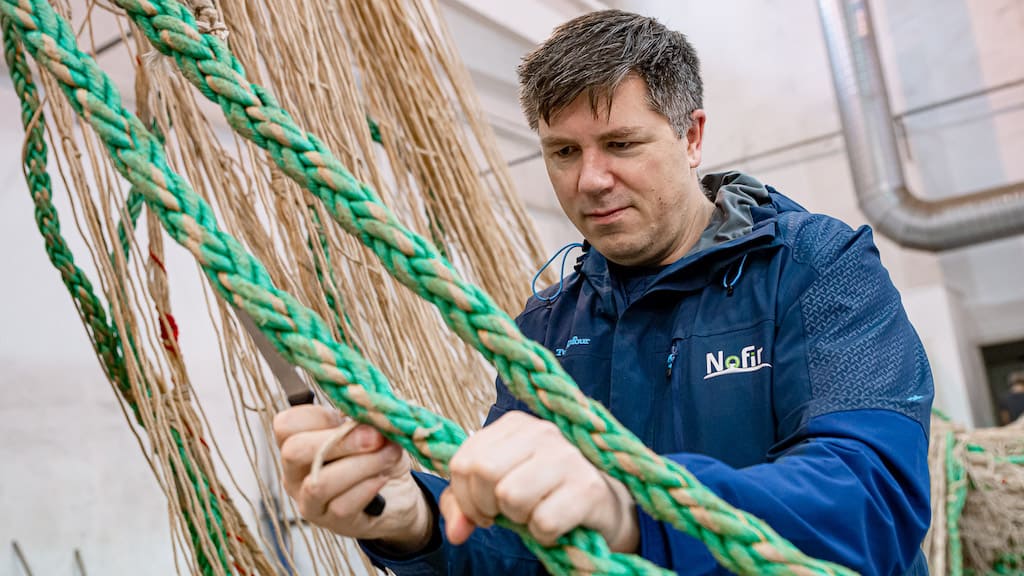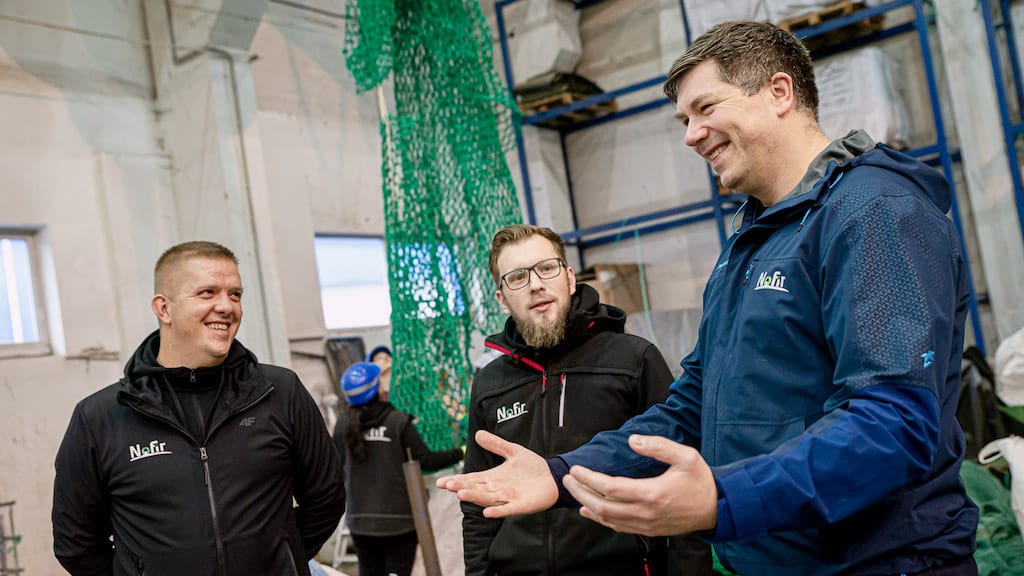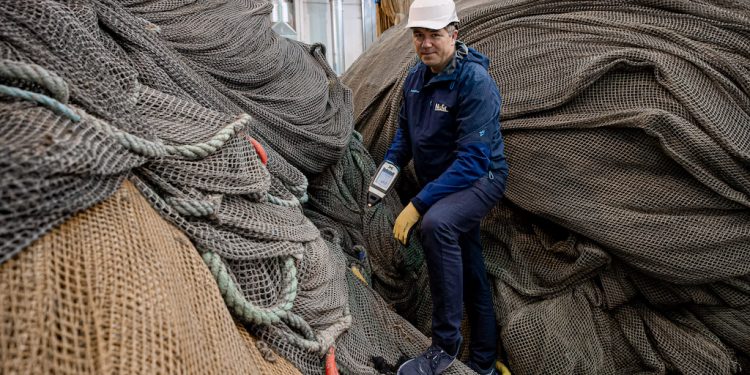Italian conglomerate Aquafil, owners of recycling company Nofir, have patented a method of recycling the netting used aquaculture cages, making it possible to recover copper impregnation for re-use.
‘The fact that the copper from aquaculture cages can now be recovered is a major victory both from a sustainability and a business perspective. This copper is given a new life in many different industries that need it,’ said Nofir’s general manager Øistein Aleksandersen.

‘In addition, the aquaculture industry can be confident that the equipment they make, process and use will have the least possible environmental impact at the end of its life. Not least, copper is highly sought after in today’s market, so being able to recycle this has far-reaching effects.’
He commented that copper impregnated equipment has long been a challenge.
‘Nylon cages are a great resource, but new EU rules in 2018 led to great difficulties for us who recycle this type of gear,’ he said, explaining that netting with copper impregnation has been considered hazardous waste.
‘It took time to adapt to the requirements. But we are now collecting full-time, and are delighted that both the nylon and the copper can be recycled.’
More recycling
Øistein Aleksandersen commented that there has been significant development in recent years by Nofir and its partners, substantially increasing the amount of material recycled, resulting in more recycled products.
‘Undoubtedly the best thing from a life cycle perspective, apart from direct re-use, is that discarded equipment can be recycled into something new. There is a very high recycling rate for aquaculture cages, with very little that has to be incinerated,’ he said.
Under Aquafil’s patent, the recovered copper can be used in its pure form, or as an additive to industrial processes – anything from industry to agriculture. The current estimate is that 250-300 tonnes of copper can be recovered every year from these nets, mostly from Nofir in Norway.

According to Andrej Lubej, CEO of Slovenian company Cinkarna Celje, which is one of the main buyers of the recovered copper, there are plenty of uses for this material.
‘One of the main areas of use for this copper will be to prevent disease in all kinds of crops, for example grapes, apples, pears or other fruits, as well as for tomatoes, potatoes and all varieties of grain. Today, only copper and sulphur can be legally used as organic fungicides for plants. In addition, copper can be used for a number of industrial purposes, including to produce welding cables.’
Disproving the myths
Øistein Aleksandersen hopes that this innovation will contribute to more widespread recycling of aquaculture cage netting. He has previously warned that misinformation about what can and cannot be recycled presents a significant bottleneck for more recycling.
‘There’s still a surprising number of people who believe that cages with copper impregnation cannot be recycled,’ he said.
‘This is not true. The same misunderstanding also applied to rope from the fish farmers for a long time. After we went out and asked clearly for more of this type of material, we saw a significant increase from 2020 to 2021.’
He believes that the coming years will see even more recycling solutions emerging against the background of the increased focus on circularity and sustainability, and not least the reporting requirements that the companies in the industry themselves face.
‘Society as a whole has become far more environmentally conscious, and huge steps forward have been made in this field. It is very good for everyone, and it is also the reason why so much time and resources are spent on developing solutions like this,’ Øistein Aleksandersen added.
‘I think it’s really impressive to think that copper that has previously impregnated a cage in Steigen or Kristiansund can be extracted and used for viticulture in Slovenia, when only a decade ago we were struggling to find recycling solutions for this material.’









